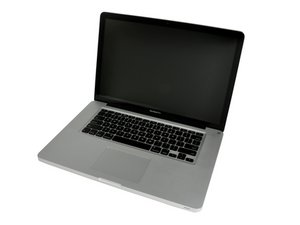Same issue, different results. Help, never have I seen this in 15 years…
2010 MacBook Pro, 2.4ghz C2D, 8 gig ram, (320 original rotational drive) 240 ADATA SSD upgrade attempted, but failed.
The ADATA 240 or 480 SATA III is what I use on all my rebuilds, never an issue.. I just put one in a 2008 MacBook and it is lightning fast, as expected.
But, this 2010 is about to cause me to lose my last 5 hairs. I formatted it, as normal, and ready to build via my USB with High Sierra natively supported. It goes through the normal steps (language, disk utility, etc.) Then it starts the build to the SSD. It starts to calculate the time to install, 9 minutes, then 45 minutes, then 1 hour 53 minutes, come back in about a half hour it says 7 hours, 23 minutes. WHATTT? Bad comm to the drive = bad cable. But, wait, it works fast and fine on the rotational drive. I order another cable to rule it out. Same exact results, but 9 hours to build a 34 minute system drive. So, I assume I got a bad SSD (although it formats fine in my 2019 MBP). Have them replace the SSD. Now I have my new cable, new SSD, ready to go. NOPE. 9 hours 54 minutes. So, I go to bed, let it build. It’s all built. Everytime I click the mouse - color wheel. I select the SSD as the startup disk, restart. It doesn’t care, still unusable. I put the original back in, fast as normal (not fast ssd though), and sellable to a needy client.
I search, starting here, and find this thread among others. I read to line the cage where the SSD fits with nylon electrical tape to help insulate the drive cable from shorting. I do that, all the way to the connector on the logic board it is not touching any aluminum. I format the drive, and rebuild. 9 hours again. Now, after 15 years of seeing almost everything, I’m completely stumped and really tired of searching for hours and hours to no avail.
I don’t like to post, I like to read so I don’t have to post. Or, post in support if I know the answer or have been through it. I’M POSTING…LOL. This one has me stumped. The only model I’ve seen that just doesn’t fly across the table in happiness with an SSD.
Could it be the SATA II vs. SATA III issue? Where can I even find a SATA II SSD? Is it a firmware issue? As I said 10.13 was installed, and has the firmware for SSD and for APFS drive settings. Bad firmware write? Where do I find just the firmware to write? The wider drive cable needed that’s for 2012 on a 2010? I’m ready for your smart ideas. Sorry, if I should have started a new topic, but this one existed with the same description. And sorry for long post, and thanks in advance for any suggestions that you don’t see here.
Cette réponse est-elle utile ?
A voté
Annuler
Indice
0
Annuler
Faites défiler ce fil pour trouver l'endroit approprié pour y placer ce commentaire. Cliquez ensuite sur « Ajouter commentaire à cette contribution » pour le déplacer.

 2
2  2
2  2
2 

1 commentaire
Hi, I did upgrade my MBP mid-2011 with an SSD 1T in the disk slot and kept the old HDD (500G with possibility to boot on it) in the optical drive space.
All went well.
After 1 month using it and booting on SSD, my MBP started to be slower and slower to boot on SSD.
I did follow the above recommendation, went in _system_pref_ Startup and found out that the HDD although greed out, was there and in first position.
I did select the SSD and clicked _restart_. ..... waited for a couple of minutes with the black screen and turning thing, and decided to power off with the power button. Then applied a "normal" restart wit the power button. (NO PRVM reset)
and ........ TADAaaa. all is fine again and fast boot on SSD.
Verified in startup, only SSD is now visible, which is ok.
Good luck.
par Gourou